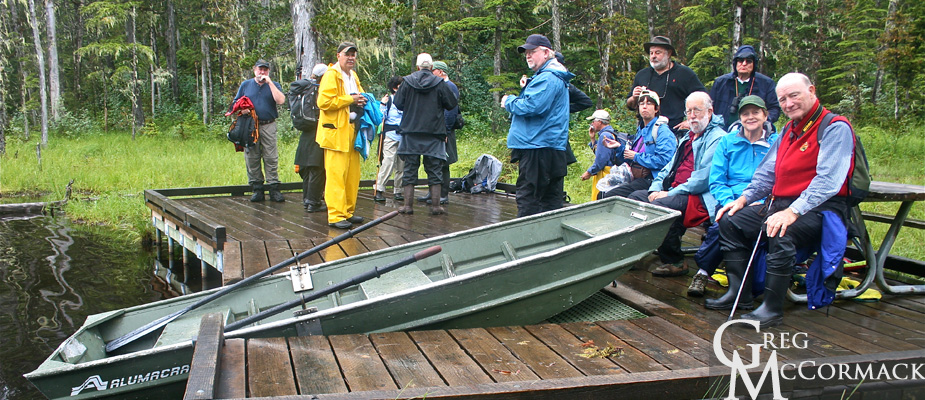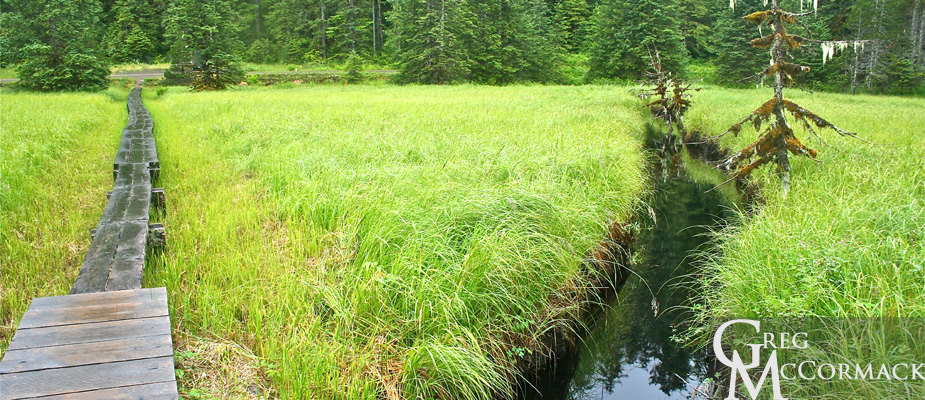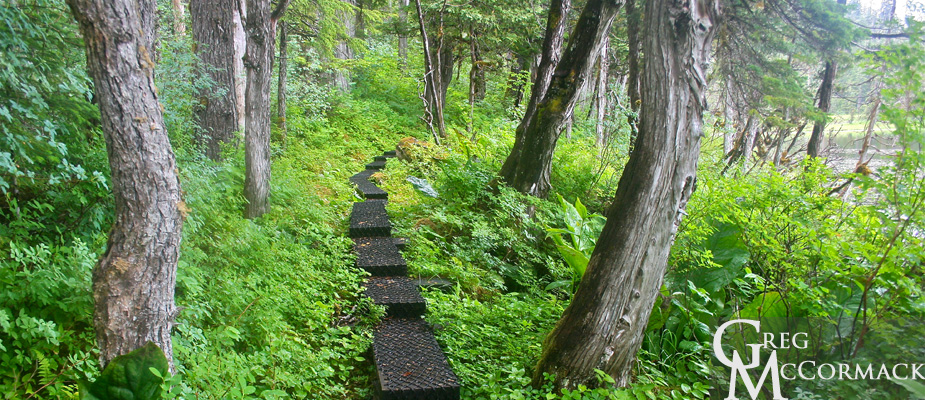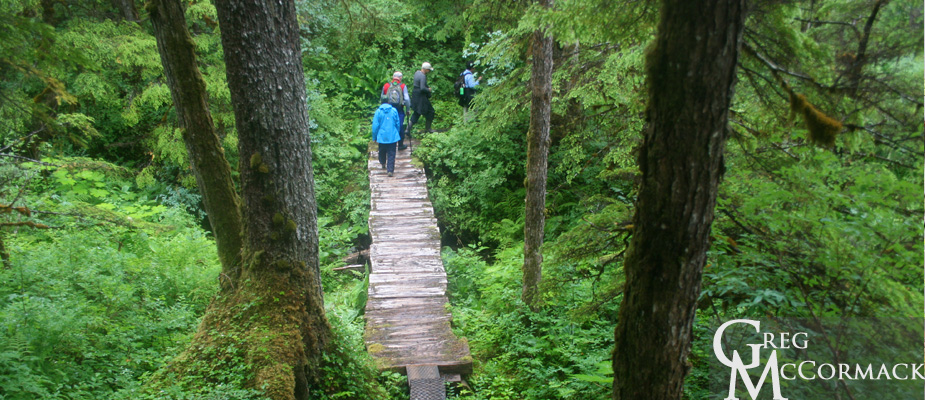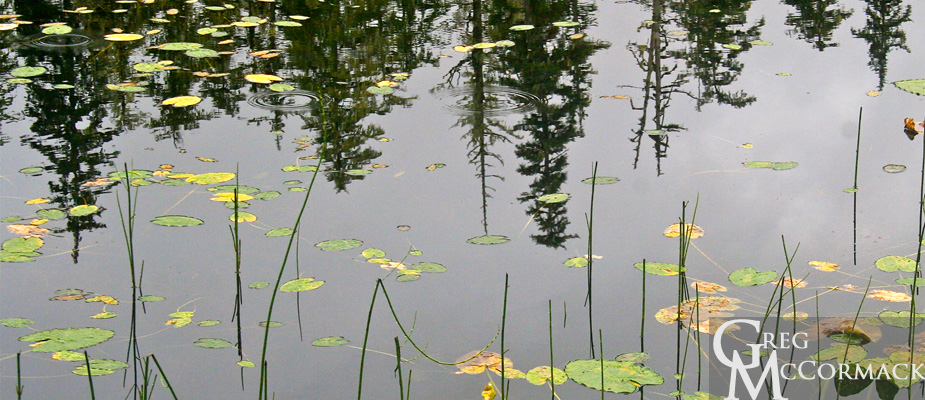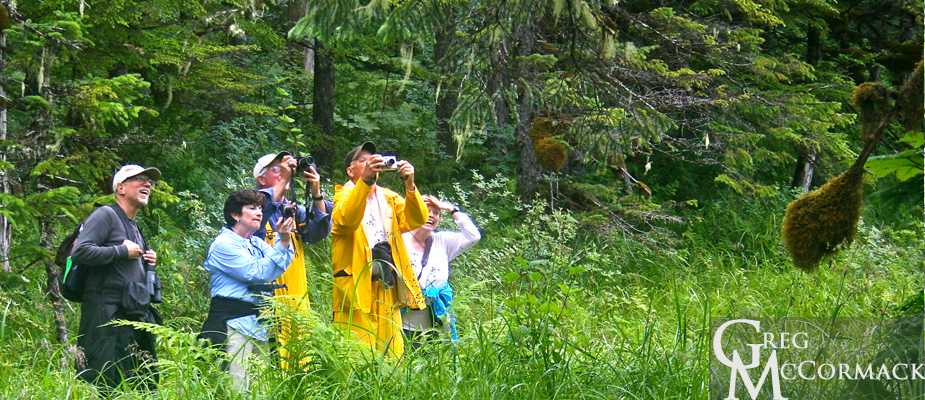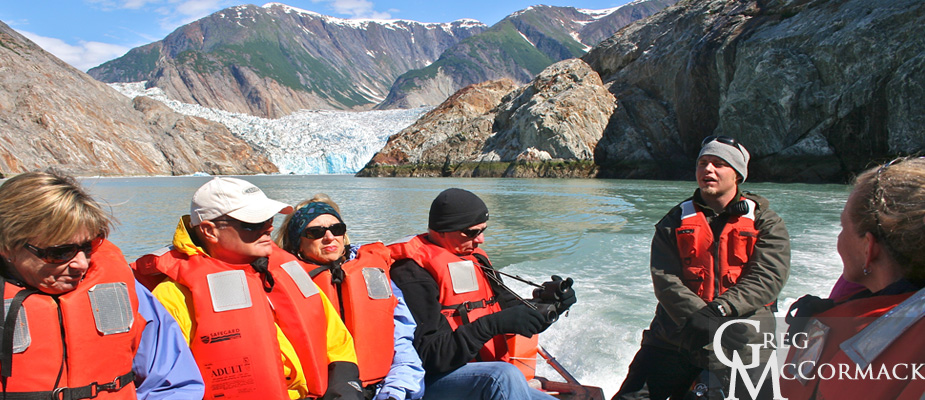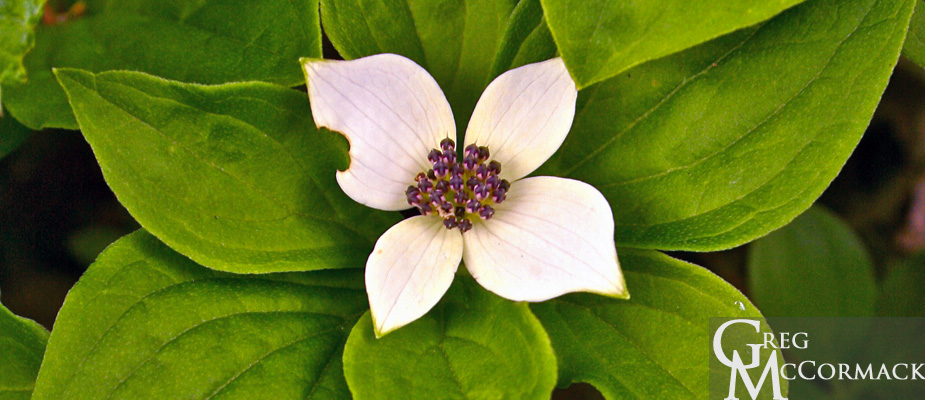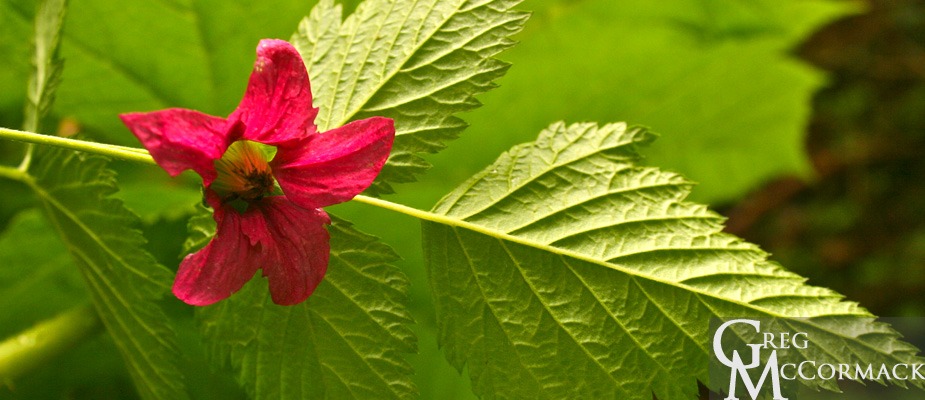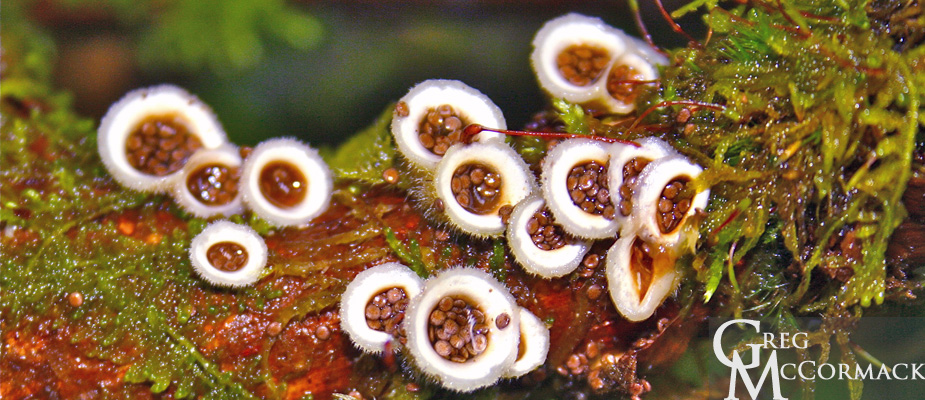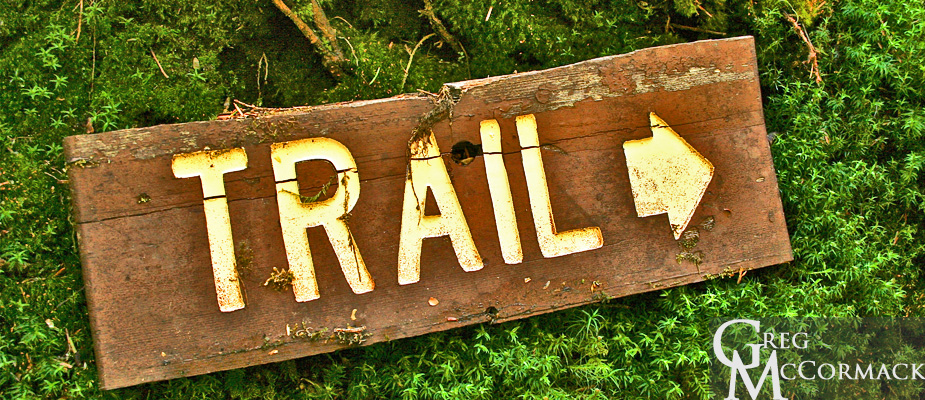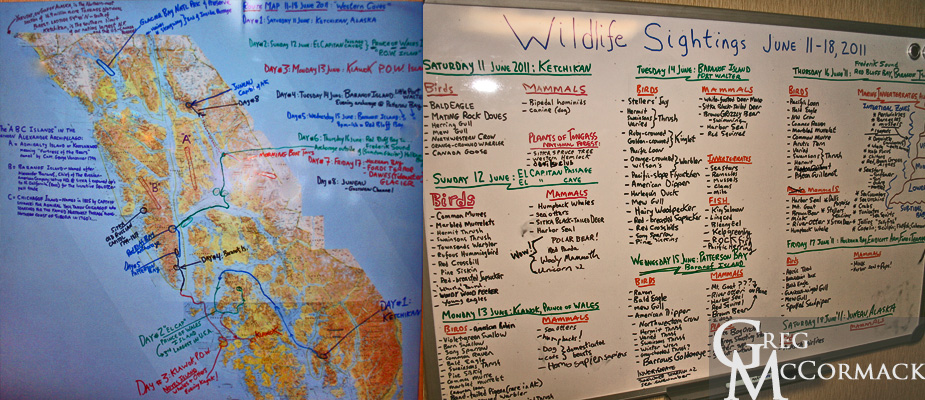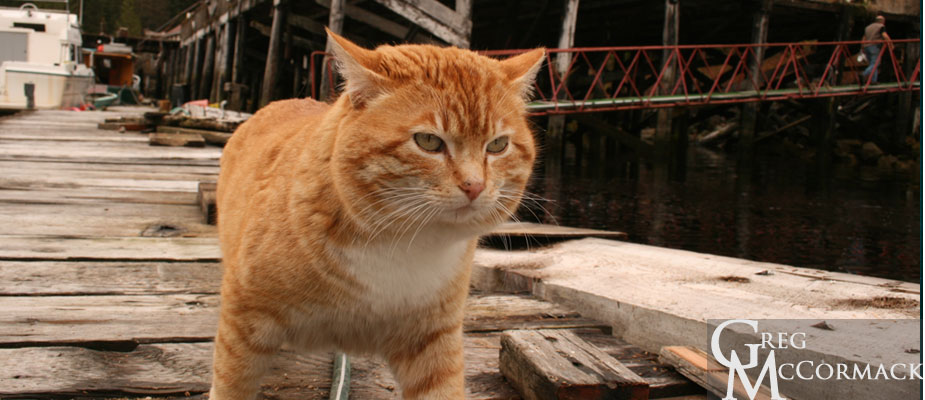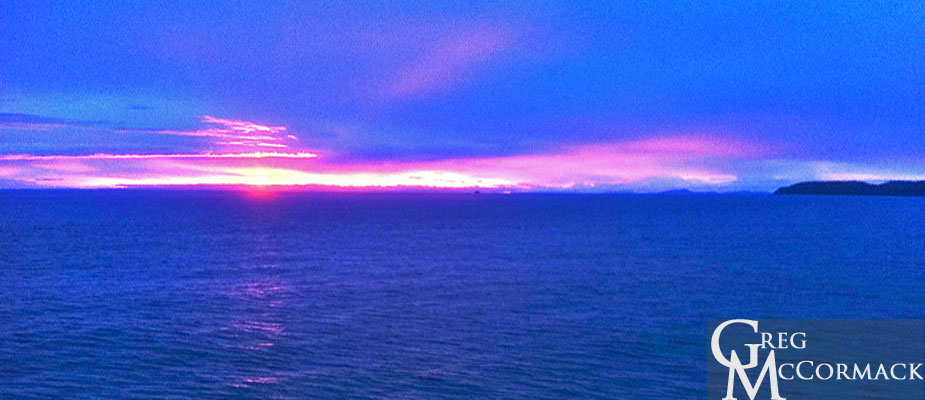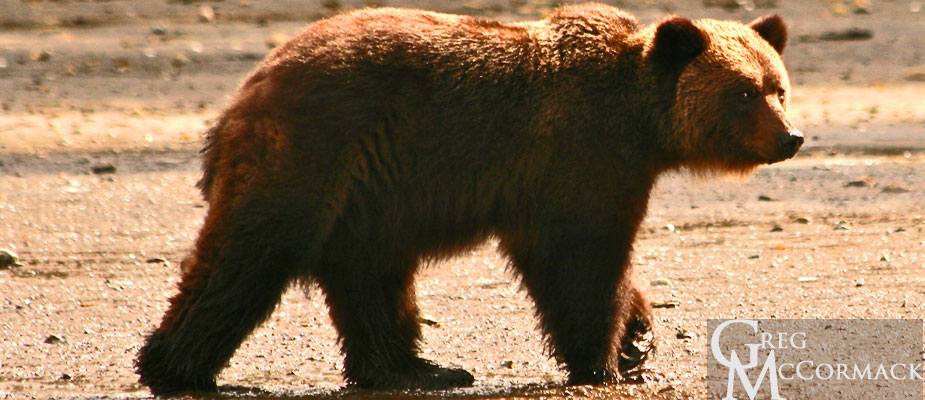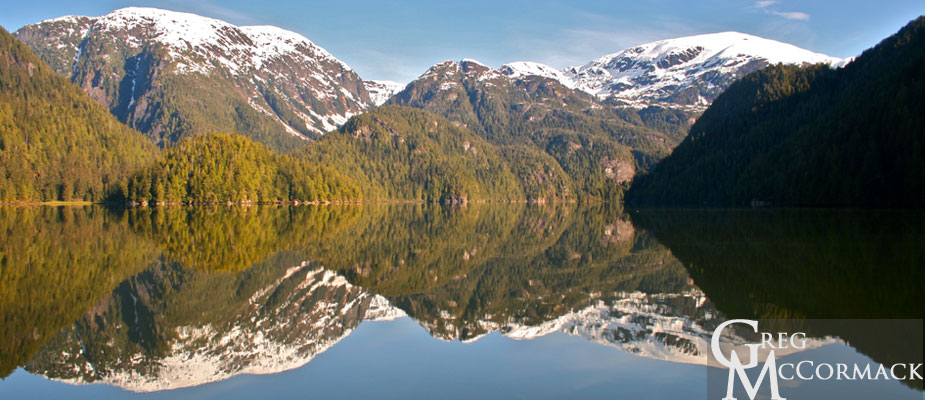Search results
Tuesday | July 19
October 3, 2011 by admin
Filed under InnerSea Discoveries
Ideal Cove
“The first requirement of a naturalist is that he be curious. He should be capable of being astonished and eager to find out.” –Erwin Shroedinger
A persistent drizzle with low-lying fog greets us this morning. We offer long hikes on the Three Lakes Trail, a Tongass National Forest maintained system of boardwalks that loop in the forest around some kettle ponds. Part of the trail is along a logging road that is accessible for cars from the nearby town of Petersburg. Nonetheless the popular trail is very scenic.
The morning hike is about 5.5 miles long and we do the loop in a clock-wise fashion to Crane Lake first and then Hill Lake. About half of the trail is along 16-inch wide boardwalk. The trail is in good shape except for a few spots where support beams have rotted or the netting that keeps you from slipping on algae slicks has fallen-off the boardwalk.
The vibrant green vegetation are “eye-candy” for all of us sauntering through the front-country in Petersburgs’ backyard. Skunk cabbage, bunch-berry dogwood, leather ferns, surround the boardwalk through the forest sections and rushes, sedges and bog orchids are adjacent to the trail in the muskeg areas.
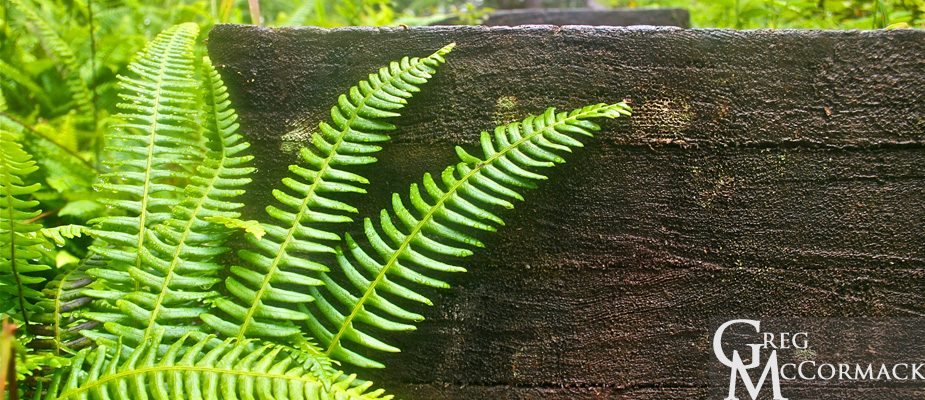
We are tempted to take a canoe out on the lake that is provided and maintained by the forest service. We did stop at picnic tables and were surprised by a sighting of a porcupine climbing up a spruce tree.
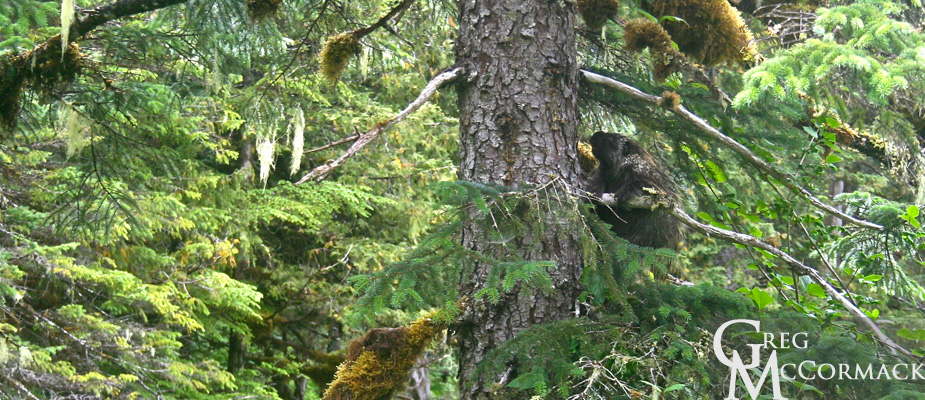
Cut trees is about all we see in the way of mammal sign. Beavers are quite active in the area and it never ceases to amaze how big a tree they can cut down. I’ve read about a researcher that played a tape recording of running water near a beaver and it tried to build a dam near the hidden tape recorder. Apparently, when the sound of running water stops, the beaver discontinues building the dam.
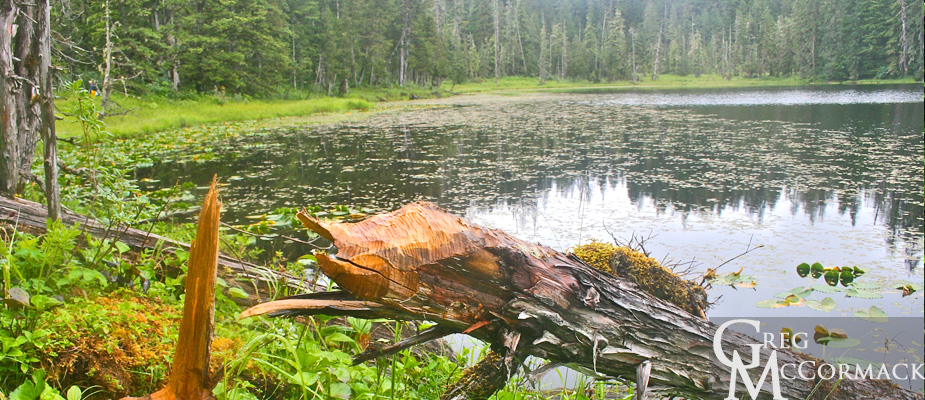
There are long sections of narrow trail where it is impossible to see your hiking partners around the next bend. Passing is not an option for folks who are behind photographers!
The reflections on the lake along with emergent aquatic vegetation such as the pond lily make for great subjects for photographers.
Periodic “National Forest” signs showing a symbol of a snowmobiler remind us one of the popular past-times in the area during the long winters here in Southeast Alaska. Some are pockmarked with bullet holes. I suppose vandals like the sound a bullet makes when it hits metal?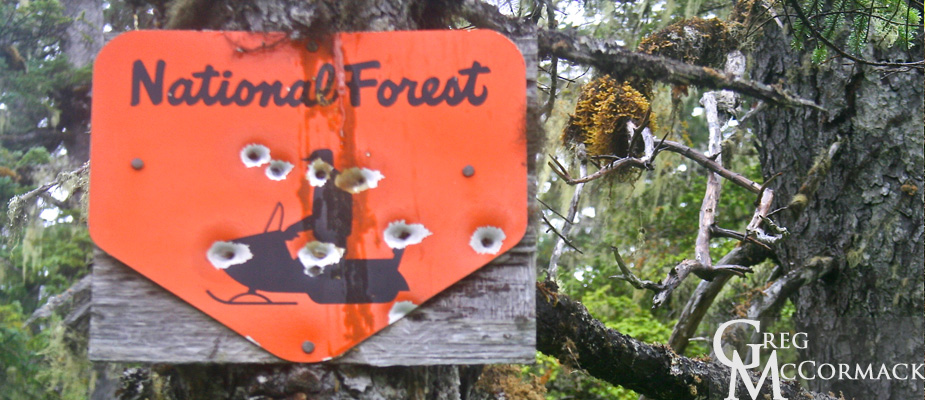
Mossy epiphyte platforms are in abundance on the dead, low-lying branches of the spruce/hemlock forest. On the largest, old-growth trees, the moss-covered branches are nesting sites for the seabird known as the marbled murrelet.
Back aboard the M/V Wilderness Discoverer, everybody is happy to peel-off wet layers of clothing and warm-up with hot drinks and camaraderie with fellow shipmates.
Sunday | July 17
October 3, 2011 by admin
Filed under InnerSea Discoveries
Tracy Arm & Sawyer Glaciers
“Domes swell against the sky in fine lines as lofty and as perfect in form as those of the California valley, and rock-fronts stand forward, as sheer and as nobly sculpted. No ice-work that I have ever seen surpasses this, either in the magnitude of the features or effectiveness of composition.” –John Muir
John Muir, writing in his book Travels in Alaska, described Tracy Arm as a “wild unfinished Yosemite”.
We awake to a fine day. The anchor is lifted at 6 a.m. and the Wilderness Discoverer cruises up the magnificent fiord that is Tracy Arm. Yosemite-like domes, waterfalls that seem to come right out of the sky, and rainforests that exhibit many shades of green are passed as we motor at the speed of 9-knots up the 23-miles to the face of the Sawyer Glacier.
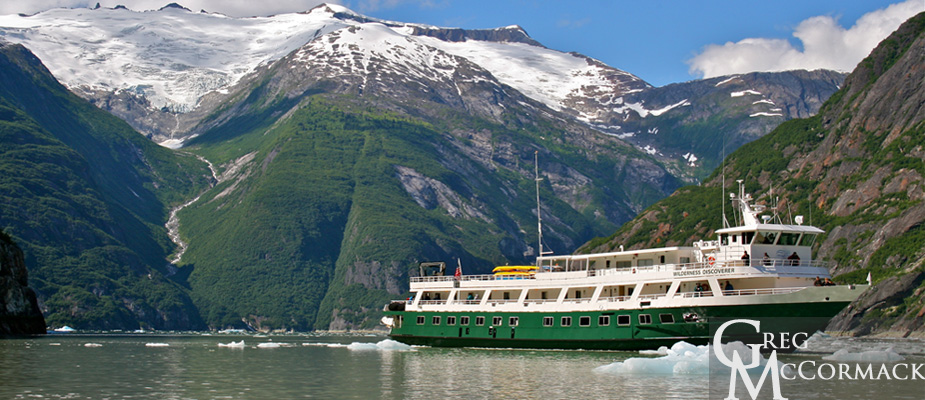
This is the Tongass National Forest, the largest National Forest in the United States at almost 17 million acres in size. It ranges from the Southeast Alaska panhandle between Ketchikan and Yakutat. It incorporates the Alexander Archipelago, located in the Inside Passage between the Coast Mountain Range and the Gulf of Alaska in the Northeast Pacific Ocean. The Tongass happens to have the largest contiguous, intact temperate rainforest in the world.
The temperate rainforest biome ranges from the narrow strip of land between northern California and Kodiak Island, Alaska. Some of the hallmarks of this rainforest is the presence of Sitka Spruce, a profusion of epiphytes such as mosses and lichens, a climate regime that includes around 100-inches of precipitation a year and the presence of nurse logs.
Small boat tours are offered to bring guests up close to the Sawyer Glacier. Photographic opportunities abound for camera-toting guests.
Brash ice is quite thick. Birds are flying back and forth in front of the tidewater glacier and seals are hauled out on small ice-bergs or “growlers”.
We are lucky to have two wilderness kayak rangers join us with two of their “artists-in-residence” volunteers. Our Tongass National Forest Rangers Solan Jensen and Sean Reilly give an insightful talk on the history of wilderness in the dining lounge.
After disembarking the kayak rangers, we ask guests to participate in three rounds of talks surrounding our adventure program of kayaking, stand-up paddleboarding or SUP, and how to behave in bear country. I lead the talk on SUP in the lounge with an assistant to “model” appropriate techniques.
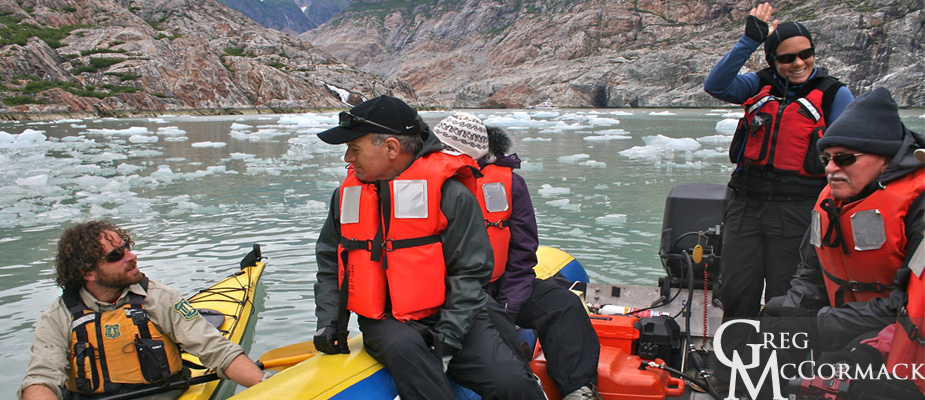
It’s amazing how SUP has become the latest trend in ocean sports. As a fitness sport, it uses all of the major muscle groups. It works the core and legs while you try to balance and the upper body while paddling.
It’s easy to carry a SUP and that is one of the major advantages over having a sea kayak. On calm, flat days the only real hazard for SUP’ers is navigating wakes from passing boats. These boards are wider and more stable than a regular surfboard. However, I would not recommended trying to walk the nose and “hanging ten”.
For novice paddleboarders, it’s worth trying it more than once to build a comfort level and to see if the sport is enjoyable. Every time you get out on the water while here on vacation will make it that much easier to try it again back home.
The minimal effort of SUP-ing (not a great acronym, I just realized) for just a few minutes while circumnavigating the Wilderness Discoverer will allow a partner or crew to photo-document your efforts. That way you can prove to kith and kin how adventurous you really were in Alaska.
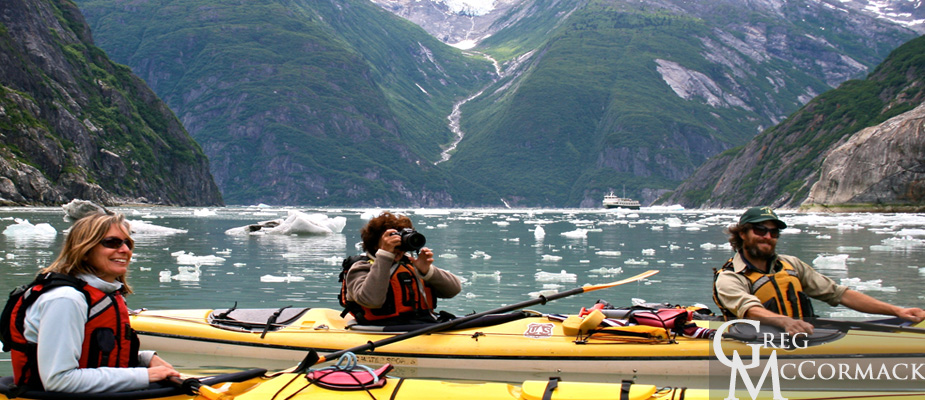
My overall message is to encourage folks to “get up, stand up…stand-up for bragging rights!”
The afternoon is spent whale watching in the waters adjacent to Admiralty Island National Monument. Kootznahoo or “Fortress of the Bears”, has the greatest concentration of brown bears in the world, about 1 bear per square mile on the 1,700 square mile island. We motor too far away to spot brown bears (visitors that want to see bears can go to Pack Creek on the northeast side of the island).
Humpback whales are spotted exhibiting a range of behavior such as spouting, lob-tailing and breaching. These fascinating baleen whales have travelled all the way from Hawai’i to feed all summer long.
Friends stay up late enjoying a lingering twilight and the ever-changing seascapes that almost hypnotize to a state of nirvana.
Tuesday | July 5
September 14, 2011 by admin
Filed under InnerSea Discoveries
“O’ Earth, What changes hast thou seen?” –Alfred Lord Tennyson
We offer several activities for guests, including paddle boarding, kayaking and a couple of different hikes, including all-day and half-day hikes. I co-lead a kayak along the lee side of Ruth Island and later a half-day hike up the Patterson River. There are lots of beautiful, verdant plants to point-out to my fellow adventure-seekers.
We see bunchberry dogwood, false lily-of-the-valley, skunk cabbage, salmonberry, several species of fungus and many other herbs, shrubs and trees.
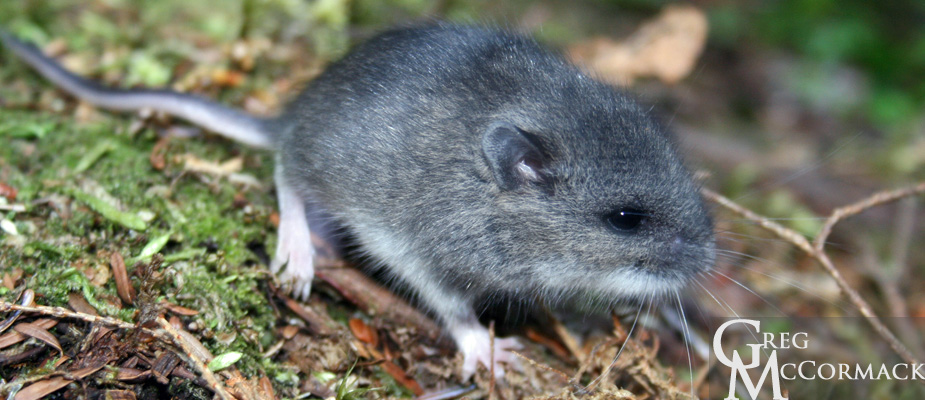
Deer Mouse
Our hike is along ATV trails. We see evidence of old cabins and (hard-to-believe) some dung from cows! Apparently this is not part of Tongass National Forest. Our scatological discovery-of-the-day were moose pellets. I pick-up a hand-full and interpret the fascinating life history of this huge Cervid species: “The moose get quite large, males up to 1600 pounds and females up to 1300 pounds.”
“Moose are herbivorous, feeding on deciduous trees such as willow and birch. Moose will eat as much as 40 pounds of willow leaves in a day, enabling the growth of huge antlers.”
“Antlers are shed in the late fall, early winter. Males are solitary except for the rut. The rut is in the fall. This is when the testosterone in the males is at its peak. Males battle it out for access to females. Subordinate male bulls are sometimes referred to as “sneaker” males for sneaking into a harem while the dominant male is off fighting another male.”
We enjoy the riparian corridor adjacent to the Patterson River. It would take all day to follow the trail up to the Patterson Glacier.
Rumor has it that our company dropped-off several kayaks by helicopter on the lakeshore just a couple of miles from the face of the glacier. One group this summer has made it all the way up with the owner of the company leading the intrepid hikers. It was a strenuous adventure of over 10 miles.
Back aboard the WND, we traverse the famous Wrangell Narrows that separates Mitkof and Kupreanof Islands. Anchorage is just a few miles from Wrangell, which lies near the 17-mile wide delta of the mighty Stikine River.
Saturday | June 18
August 2, 2011 by admin
Filed under InnerSea Discoveries
Juneau
I update the map and wildlife list for our week-long voyage. I draw a profile of the intertidal zone (ITZ) on the grease board and have a couple of guests help me look-up a few of the creatures seen during our snorkeling session yesterday.
Friday | June 17
August 2, 2011 by admin
Filed under InnerSea Discoveries
“I DATED YOUR SISTER!”
This is what I jokingly tell my guests on my 2nd small-boat tour after meeting Tongass National Forest wilderness ranger Solan Jensen. We could see his food hanging in a tree above his camp adjacent to where we drop off guests for a low-tide circumambulation. Solan greets us and introduces us to fellow ranger Iris Neary. I knew Solans’ name had sounded familiar! I met his sister back in the mid-90’s in Juneau. We worked for the Glacier Bay Tours and Cruises (bankrupt since 2006) and I have not had the good fortune to work with her since that bygone era.
Aleria now works as the NOAA marine mammal stranding coordinator for the Alaska region. Her brother Solan is an expert naturalist and is working another year as a kayak ranger. One of our guests recognized Solan as the naturalist he had on a vacation to the Antarctic region years earlier. During the northern hemisphere winter (Austral summer), Solan works for Quark Expeditions. Feels like a small world today!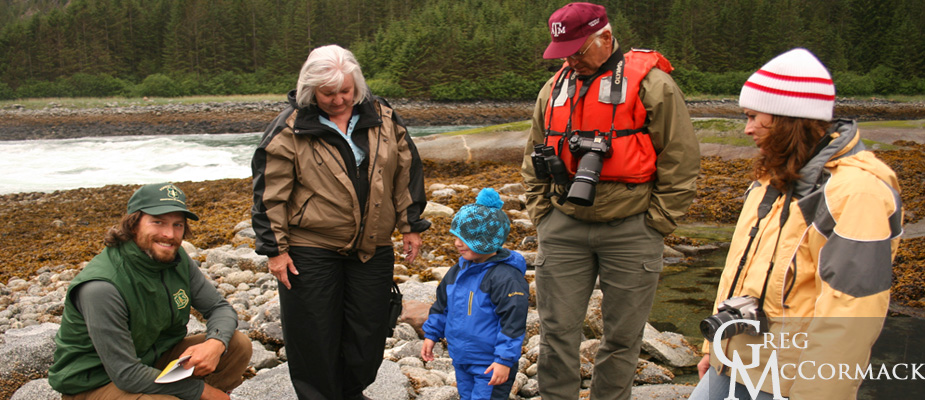
We tour the biologically diverse tide-pools. Folks are mesmerized watching the standing waves of the outgoing tide that passes through this narrow part of the fiord.
Later we cruise up to the Dawes Glacier, a tide-water glacier that discharges 1000’s of tons of ice each day during calving events. Harbor seals “surf” the bergs as they are carried away from the 250-foot wall of ice on the outgoing tide.
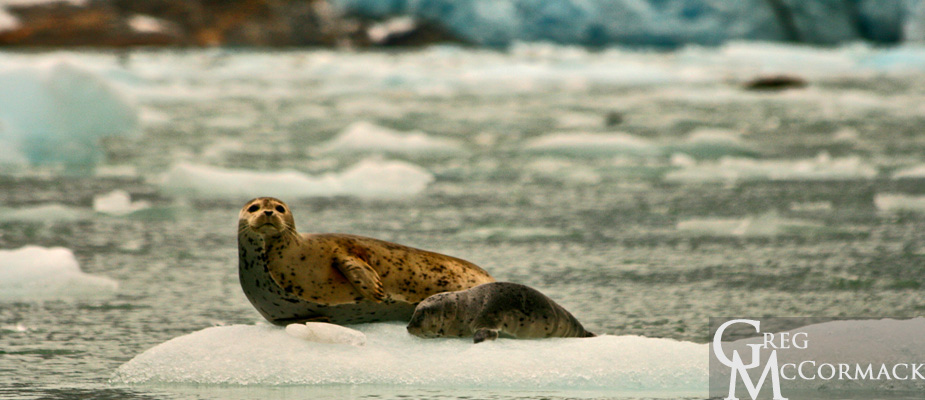
Thursday | May 12th
May 20, 2011 by admin
Filed under InnerSea Discoveries
I missed Klemtu…terrific last time with the Oceanus three years ago. Captain Marce said she saw some Pacific white-sided dolphins at 3 a.m. Today lots of rain squalls, most of them light rain followed by brief bursts of sunshine. Lovely scenery that grows on you…endless mountains and glacial fjords, trees and waterfalls, eagles and inlets….
Right at the time that Lauri was to give a talk on the Tongass National Forest we arrived in Butedale. Bosun was to take Randall out for pictures…Randall forgot his pics and I jumped on board to do a plankton tow with the net that Jacqui gave us for the season…another reason I really like her and wish we’d cross paths again soon. We end up going over and talking to the two caretakers that have been on Prince of Wales island for a long time. Fun to see the dilapidated old cannery started in 1902 with a very cute stocky orange cat named “Tiger”.
We give them the very tasty breakfast burritos we had earlier and some of the fabulous bread that Lee cooks up for us every day. Then we invite them onto the ship. Bosun then drove Randall and I for some pictures of the waterfall and I do my plankton tow and put them in Petri dishes and have the passengers enjoy in the 20X and 40X of the stereoscopes.
Ron gave a talk to the passengers for ½ hour or so and we said our goodbyes and it was fun to be a part of the dignitary group…reminded me of the chiefs of Ifaluk in the south pacific 3 years ago as well. I feel I’ve reached a certain maturity and it is fun to be on the Bridge. Before lunch, I grabbed the microphone and thanked the Captain, Chief Mate, Bosun, E.L. and Hotel Manager for their flexibility and for bringing us this serendipitous expedition stop and announced the new map on the wall that Randall and I put up, as we finished the previous one.
Beautiful rain squalls for more pictures and a project just before the rain of putting together all of our tents this morning going through all of our first aid kits and labeling items….
I gave a talk on the natural history of the 3 bear species in alaska and what to do around bears. Entertaining and I also showed some slides of my program on the Great Bear Wilderness of the Kermode/spirit bear with some of my slides from Katmai. Mentioned Timothy Treadwell from Grizzly Man.
Pass Prince Rupert at 11:30 and we will enter the State of Alaska soon after passing through the testy waters of Dixon Entrance, lasting 4 hours


